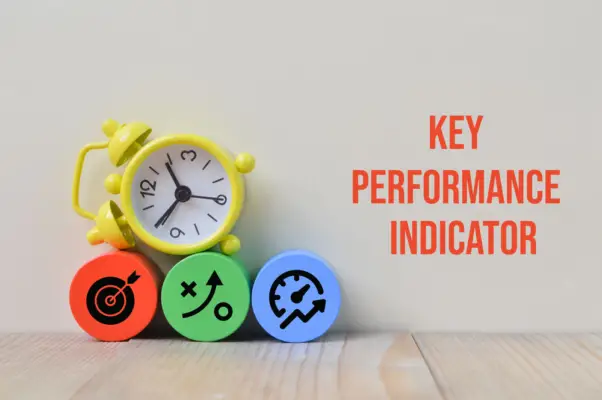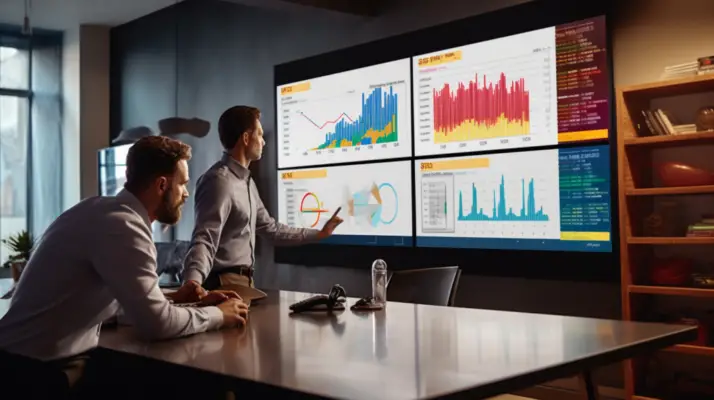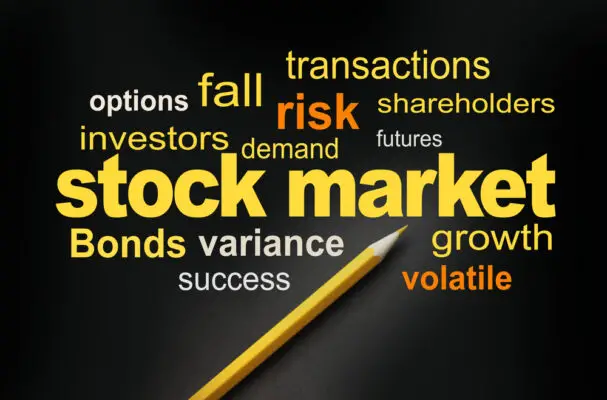Risk management identifies and mitigates potential risks that could impact an organization’s ability to achieve its objectives. One tool that aids in this process is the Key Risk Indicators (KRI) dashboard, which provides a comprehensive overview of an organization’s risk profile.
This article aims to explore the importance of risk management and delve into the concept of KRI dashboards, highlighting their significance in facilitating effective risk assessment and mitigation strategies.
Understanding key risk indicators involves identifying specific metrics or variables that can serve as early warning signals for potential risks. These indicators help organizations monitor and evaluate their exposure to various risks, such as financial, operational, regulatory, or reputational risks.
Designing an effective KRI dashboard involves selecting relevant KRIs based on the organization’s objectives and risk appetite.
Furthermore, data analytics plays a critical role in enhancing the effectiveness of KRI dashboards by enabling organizations to analyze vast amounts of data efficiently. Organizations can gain valuable insights into emerging risk trends and patterns by leveraging advanced analytics techniques.
Implementing robust risk mitigation strategies based on insights from KRI dashboards is crucial for minimizing potential threats and ensuring organizational resilience. This article will provide insights into best practices for designing and utilizing KRI dashboards effectively to enhance overall organisational risk management capabilities.

Importance of Risk Management
The importance of risk management lies in its ability to proactively identify and address potential risks, thereby minimizing the negative impact on an organization’s objectives and enhancing its overall performance.
The value of risk management in business cannot be overstated, as it provides a systematic approach to identifying and assessing potential risks that could hinder the achievement of organizational goals.
One of the primary benefits of risk management is its ability to anticipate and mitigate potential threats before they materialize. By conducting thorough assessments, organizations can identify areas where they are vulnerable and develop strategies to minimize or eliminate those risks. This proactive approach allows businesses to be better prepared for unexpected events, reducing the likelihood of financial losses or reputational damage.
Risk management also enables organizations to make informed decisions by considering the potential rewards and associated risks. It helps businesses prioritize their resources by focusing on areas with higher risk levels, ensuring that limited resources are allocated effectively.
This strategic allocation not only minimizes exposure but also enhances operational efficiency.
Furthermore, effective risk management promotes a culture of accountability within an organization. It encourages employees at all levels to take ownership of their actions and consider the potential consequences before making decisions. This heightened awareness fosters a more responsible and proactive workforce better equipped to manage unforeseen challenges.
The value of risk management in business lies in its ability to identify and assess potential risks systematically. By proactively addressing these risks, organizations can safeguard their objectives while enhancing overall performance.
Understanding Key Risk Indicators
To better comprehend and evaluate potential threats, it is essential to gain a comprehensive understanding of the indicators that provide insight into risk levels. Key Risk Indicators (KRIs) play a vital role in this regard, as they are specific metrics used to measure and monitor organisational risks. These metrics serve as early warning signs allowing management to mitigate potential risks proactively before escalating.
Understanding KRIs involves familiarizing oneself with various risk measurement techniques. Firstly, qualitative techniques involve subjective assessments based on expert opinions and judgment. This includes scenario analysis and the Delphi technique, which rely on collective intelligence and expert consensus.
Secondly, quantitative techniques use historical data and statistical models to quantify risks accurately. Examples include value-at-risk (VaR) analysis and stress testing.
By utilizing KRI metrics and risk measurement techniques, organizations can effectively identify areas of vulnerability and focus their resources on implementing appropriate controls. It enables them to establish a systematic approach towards risk management by providing objective insights into the overall risk landscape.
Ultimately, understanding key risk indicators enhances decision-making processes by identifying critical risks promptly, thereby minimizing potential negative impacts on the organization’s performance and reputation.
Designing an Effective KRI Dashboard
Designing an effective KRI dashboard necessitates a thoughtful and strategic approach to visualizing data, enabling organizations to gain actionable insights into potential threats and make informed decisions. A well-designed dashboard should optimize the presentation of key risk indicators (KRIs) visually intuitively, facilitating easy interpretation and analysis.
Visualizing KRI data involves displaying relevant information using charts, graphs, tables, or other visual elements effectively conveying the message. Different types of visuals can be used depending on the nature of the KRI and its intended audience.
One effective way to design a KRI dashboard is by incorporating a 2-column and 3-row table. This allows for clear organization and comparison of different KRIs across multiple dimensions. For example:
| KRI Category | Current Value | Target Value |
|---|---|---|
| Financial | $500,000 | $600,000 |
| Operational | 85% | 90% |
| Cybersecurity | Low | Medium |
This table concisely summarises various KRIs related to financial performance, operational efficiency, and cybersecurity risks. Comparing current values with target values, stakeholders can quickly identify areas that require attention or further investigation.
An effective KRI dashboard optimizes visual representation and facilitates comprehension of critical risk information. Utilizing appropriate visualization techniques enhances decision-making processes by enabling organizations to proactively manage risks based on reliable insights from the presented data.

Using Data Analytics for Risk Assessment
Utilizing data analytics in risk assessment empowers organizations to uncover valuable insights, enabling informed decision-making and fostering a proactive approach towards managing potential threats.
Data-driven decision-making allows organizations to make more informed choices by analyzing large volumes of structured and unstructured data. By utilizing predictive analytics, organizations can anticipate potential risks before they occur, allowing them to take proactive measures to mitigate their impact.
The benefits of using data analytics for risk assessment are numerous. Firstly, it allows organisations to identify patterns and trends that may indicate future risks. This allows them to develop strategies and allocate resources accordingly.
Secondly, data analytics can help organizations prioritize risks based on their likelihood and potential impact. Organizations can focus on addressing risks first by understanding which risks are most critical.
Finally, data analytics enables organizations to monitor key risk indicators in real-time, providing early warning signs of potential issues.
Incorporating these innovative techniques into risk assessment processes enhances an organization’s ability to identify risks and helps them respond effectively. It allows for a more comprehensive understanding of the environment in which they operate and facilitates a proactive approach towards managing potential threats.
Organizations can stay one step ahead in an increasingly complex and uncertain business landscape by leveraging data-driven decision-making and predictive analytics.
Implementing Risk Mitigation Strategies
Implementing effective risk mitigation strategies is crucial for organizations to minimize potential threats and ensure business continuity in an ever-changing and unpredictable environment. By identifying and analyzing key risks through data analytics, organizations can develop a comprehensive risk response plan that includes appropriate risk mitigation techniques.
One common approach to risk mitigation is the use of preventive controls. These controls aim to reduce the likelihood or impact of potential risk by implementing security protocols, training programs, or regular maintenance checks. For example, implementing fire safety procedures and training employees on proper evacuation protocols can help mitigate the risk of fire-related incidents.
Another strategy is using detective controls, which focus on identifying risks after they have occurred but before they cause significant damage. This may involve implementing monitoring systems, conducting regular audits, or performing incident investigations. Organizations can take immediate action to prevent further harm by detecting risks early on.
Corrective controls address risks that have already caused damage or disruption. This may involve restoring systems or processes affected by cyber-attacks or developing contingency plans for natural disasters. These measures help organizations recover quickly from adverse events and minimize their impact on business operations.
Implementing risk mitigation strategies is essential for organizations to navigate uncertainties effectively. Through preventive, detective, and corrective controls, businesses can proactively manage risks and protect their long-term success in today’s complex business landscape.
| Risk Mitigation Techniques | Description |
|---|---|
| Preventive Controls | Focus on identifying risks after they have occurred but before causing significant damage through monitoring systems and audits. |
| Detective Controls | Address risks that have already caused damage or disruption through system restoration or contingency planning. |
| Corrective Controls | Address risks that have already caused damage or disruption through system restoration or contingency planning |
Frequently Asked Questions
How can a key risk indicators dashboard help organizations in decision-making processes?
A key risk indicators dashboard facilitates decision-making processes by providing real-time monitoring, enabling organizations to react promptly to potential risks. Automation in its implementation streamlines data collection and analysis, improving efficiency and accuracy.
What are the common challenges faced while designing and implementing a KRI dashboard?
Challenges in implementing a KRI dashboard include ensuring accurate data collection, defining relevant and measurable indicators, integrating multiple data sources, addressing information overload, managing stakeholder expectations, and maintaining a user-friendly interface.
How can organizations ensure the accuracy and reliability of the data used in a KRI dashboard?
Data validation and governance are crucial for ensuring the accuracy and reliability of data used in a KRI dashboard. Implementing robust validation processes and establishing effective governance frameworks minimize errors, enhance data quality, and maintain the trustworthiness of the information displayed.
What are the potential benefits of incorporating data analytics into the risk assessment?
Potential benefits of incorporating data analytics into the risk assessment process include increased accuracy and reliability of risk identification, improved decision-making, enhanced predictive capabilities, and a better understanding of potential challenges. Data visualization techniques can aid in presenting complex information for easier interpretation.
How can organizations effectively communicate and present the insights from a KRI dashboard to stakeholders and senior management?
Organizations can effectively communicate insights from a KRI dashboard to stakeholders and senior management through clear and concise presentations. This ensures stakeholders understand the information presented and can make informed decisions based on the insights provided.

Conclusion
An effective KRI dashboard is crucial for organizations to identify, monitor, and mitigate risks. Organizations can gain valuable insights into potential risks and make informed decisions by utilising data analytics.
Risk management is vital in minimizing the impact of uncertainties on business operations and achieving long-term success. Implementing risk mitigation strategies based on KRI analysis allows organizations to address potential threats and protect their assets proactively.
Therefore, designing and utilizing a comprehensive KRI dashboard is essential for effective risk management.

Chris Ekai is a Risk Management expert with over 10 years of experience in the field. He has a Master’s(MSc) degree in Risk Management from University of Portsmouth and is a CPA and Finance professional. He currently works as a Content Manager at Risk Publishing, writing about Enterprise Risk Management, Business Continuity Management and Project Management.

